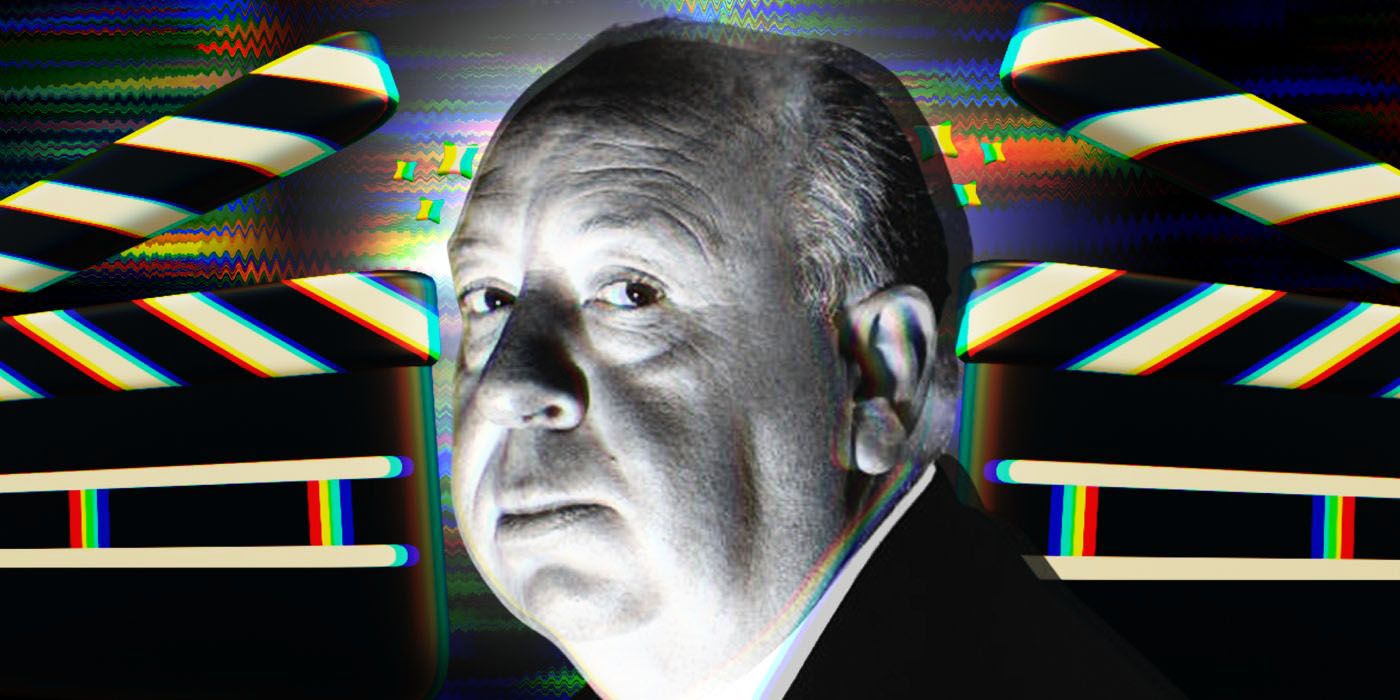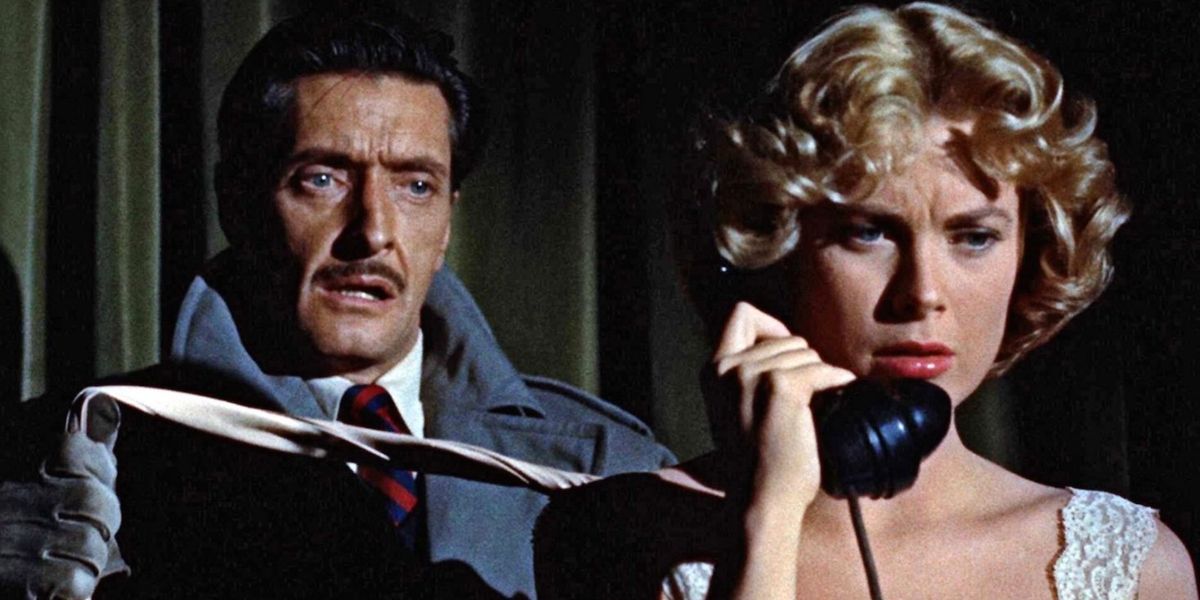While today we mourn the loss of movie stars, we still have a select group of directors who can inspire an audience to see a film based on their name alone. Filmmakers like Christopher Nolan, James Cameron, Jordan Peele, and Quentin Tarantino have inspired loyal followings based on their track records and showmanship. The precedent for this trend was set decades earlier by the great Alfred Hitchock, who was often more famous than the stars that he cast to lead his films. By the time that Psycho was released in 1960, Hitchcock loomed over the poster larger than Janet Leigh or Anthony Perkins. However, one of Hitchcock’s most inventive endeavors was one that no one came to see. Hitchcock had the foresight to see the 3D trend coming, but his 3D film Dial M for Murder was strangely ignored upon its initial release in 1954.
The neglect is disappointing, considering that Hitchcock was at the height of his career and had released the widely popular Rear Window the same year. In hindsight, Dial M for Murder has been hailed as a classic, and was even listed by the American Film Institute as one of the ten greatest mystery films ever made in 2008. The film follows the wealthy heiress Margot (Grace Kelly), whose husband Tony Wendice (Ray Milland) discovers that she’s been having an affair with pulp fiction writer Mark Halliday (Robert Cummings). He attempts to have her murdered and reap the benefits by blackmailing his old acquaintance Charles Alexander Swann (Anthony Dawson) into pulling off the murder.
It wasn’t the only time in Hitchcock's career that his most inventive projects weren’t acclaimed during their initial release; Rope utilized the single tracking shot technique long before 1917 or Birdman, and the initially divisive Vertigo was named by Sight & Sound film critics as the second greatest movie of all-time. The use of 3D would dominate the industry decades later, and Dial M for Murder was specifically made to be projected as Hitchcock intended. Sadly, issues in the distribution prevented the audience from seeing how visionary Hitchcock’s forgotten masterpiece was.
'Dial M for Murder' Was a Nightmare for Hitchcock to Film
While you’d certainly get the impression that 3D was invented by James Cameron with Avatar, American cinema has been using the technique for over a century. After a series of early experiments, the first 3D film The Power of Love (which sadly is now considered lost) was screened for a select commercial audience in 1920. The experimental MGM short film Audioscopiks was nominated for the Academy Award for Best Short Subject (Novelty) in 1936, but the “3D” boom didn’t emerge until the 1950s. It was then when audiences flocked to the theater to see films (generally within the horror genre) such as House of Wax, Man in the Dark, It Came From Outer Space, Melody, and the infamously derided Robot Monster.
By the time that Hitchcock was preparing Dial M For Murder, Warner Brothers installed a new policy that ensured that all 3D films would be simultaneously released in 2D (against Hitchcock’s wishes). The film was shot under laborious conditions due to the dual camera system that 3D required; since Warner Brothers only had one usable 3D camera rig at the time, Grace Kelly had to film a majority of the intimate scenes alongside a system that nearly took up the entire room. While some films opted to shoot in a cheaper format using less expensive red-and-blue anaglyphs, Hitchcock underwent the traditional polaroid process in order to ensure the quality of the images.
Due to competition from Cinemascope's 1953 film The Robe, Hitchcock was forced by Warner Brothers to shoot in a 1.85:1 aspect ratio, a much larger format than what he was generally accustomed to. It made staging more elaborate scenes challenging, to Hitchcock’s annoyance. He would later regret that he was only able to use “cinematic means to narrate a story taken from a stage play,” and was simply responsible for “setting the camera up and photographing people acting.” Unsurprisingly, Dial M for Murder would find success when it was adapted into a stage play of the same name.
A Bungled Release and Later Re-appreciation for 'Dial M for Murder'
Despite bowing to Warner Brothers’ request and using the larger camera rig, Hitchcock still shot Dial M For Murder with the intention that it would screen in 3D. When projected in 2D, details noticeable within the span of the larger aspect ratio would be lost or relegated to the background. Simple things like focus and angle would be cut off or blurred, and not capture the same tension that is essential to the film.
However, Hitchcock was once again a victim of studio meddling when the film was finally released in theaters. After an early screening was screened improperly, Warner Brothers panicked and only sent a 2D version into wide release after theater owners requested “flat” projections. Despite the fact that many films were doing well in 3D at the box office, Dial M for Murder was only viewable in its intended format by a select audience. The fad of 3D would simply die out by the end of the 1950s. However, it later received a revival in the 1980s when the studios began once again using it to market horror films (such as the infamous Friday the 13th: Part 3).
It’s not surprising that it was during this revival that a re-release of Dial M for Murder was issued properly and acclaimed for its novelty. Although 3D again fell out of style due to cheaply produced productions at the end of the 1980s, Dial M for Murder was re-released on 3D Blu-Ray in 2012. It was later hailed by contemporary reviewers as one of the stronger examples of the format. It’s eerie how close this entire controversy rings true today; 3D films fell out of style in the late 2010s due to cheap post-production conversion, but we just saw with Avatar: The Way of Water that audiences are still interested. 3D can be a success; you just need someone like Hitchcock or Cameron to do it right.


